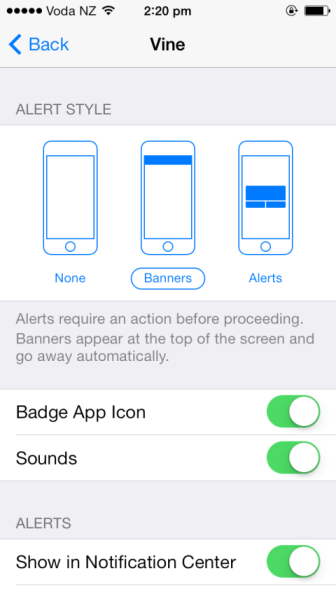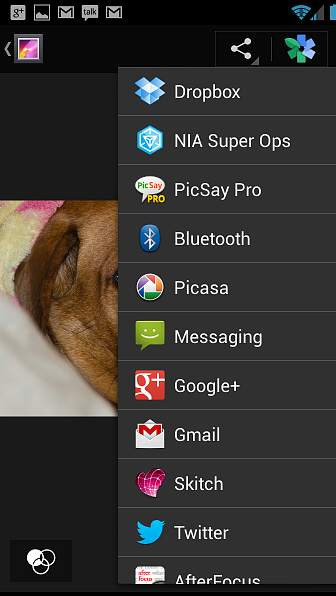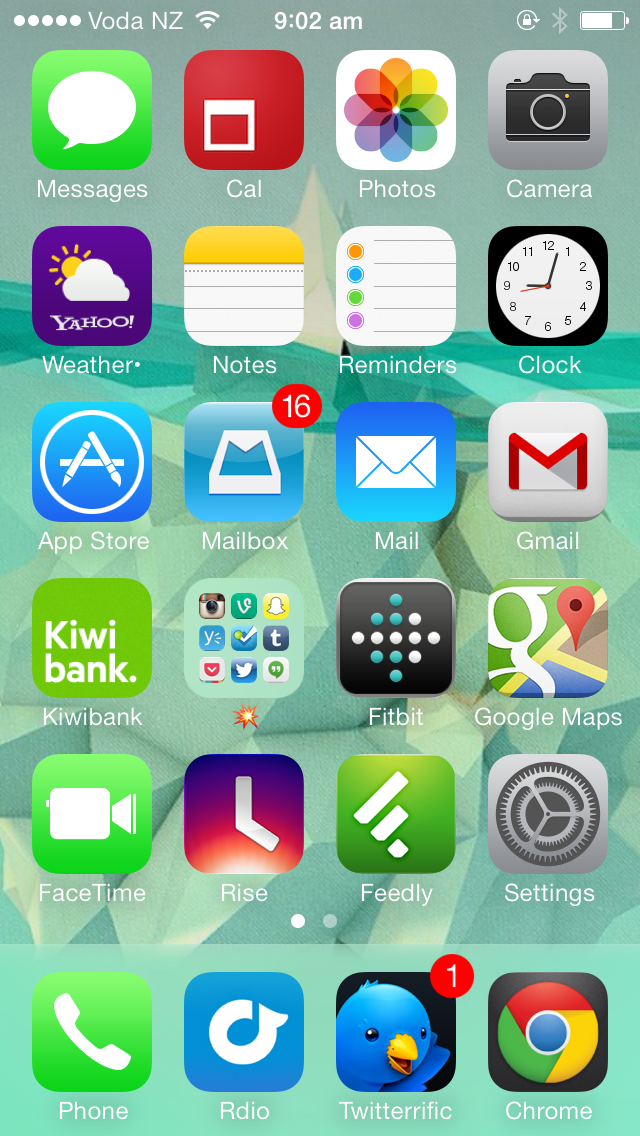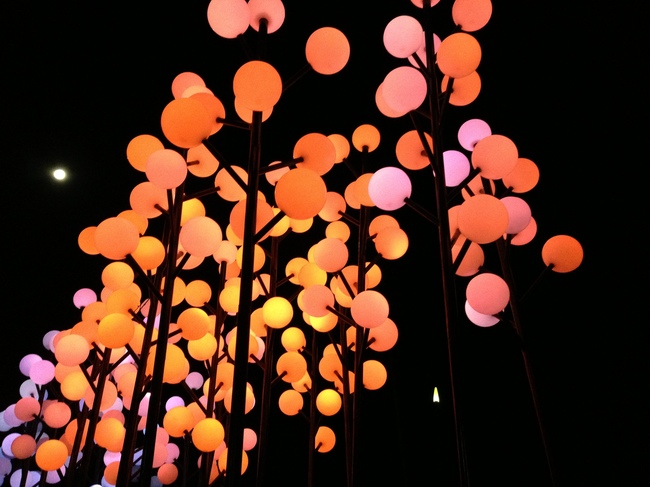Android is better? Not if you look deeper.
A post circulated the web by a designer at Twitter yesterday – Paul Stamatiou – that made a bold claim: Android is better. The post, which covers off a range of reasons why Android is better than iOS really paints a great picture of how far Android has come since the days of Gingerbread but fails to really mention the large gaps and downfalls of the ecosystem. There’s a lot more going on than meets the eye.
Late last year after the iPhone 5 was announced I wrote a post entitled “Why I won’t be buying the iPhone 5” which spread quite a bit. I’m here today – a year on – to admit that I have actually purchased an iPhone 5. The post itself was directly about Windows Phone 8, but that was a complete disappointment. It ultimately has gone nowhere in an entire year so I never switched. The theory was good but the execution was not there.
I’ve stuck with Android for the better part of two years thanks to a handful of phones (Galaxy Nexus, Nexus 4, HTC One X, HTC One and finally the Samsung Galaxy S4) but eventually gave up a few months ago and switched to iOS. Android is simply disjointed, inconsistent and lackluster. That’s a big call, but I’m going to tackle my reasons for moving away from Android in the order they appear in Paul’s post.
Apple Lock-In #
Let’s be clear here, I am not even part of Apple’s ecosystem and I find it far better, even at Google’s services. Paul tackles Photostream, iTunes, Safari sync and other services but doesn’t really mention the Google alternatives that are actually on the iPhone.
In my experience, Google services on iOS actually work better on iOS then they do on Android. The Gmail app is slick, clean and fast (and hey, there even are alternatives you can use on iOS too), calendar integration works fine, Maps is far more attractive and Facetime is a leap ahead of Skype or Google Hangouts. As for everything else, Photostream might have a ridiculous 1,000 photo rolling limit but Dropbox and Google+ Auto Backup also work fine on iOS. I don’t get the big deal about this, there’s nothing missing here.
I too am well entrenched in the Google ecosystem, but I’m telling you in my experience they work together better on iOS than on Google’s own operating system.
How I fell in love #
Paul goes into the reasons he fell in love here and I’ll concede there is one that I miss most: Android’s notification tray. Even in iOS 7, the notification center is nowhere near as useful as that of Android, nor is it as functional. It’s simply not good enough and Android Jellybean’s expanded notifications are sorely missed. There are downfalls to this though, which I’ll discuss later.
Larger screen sizes are nice, but it’s all down to personal preference on this one, in my opinion. I loved the huge displays on the One and the S4, but I can happily live without them (and I like being able to reach the top left of the screen with one hand).
There really is an app for that #
This is where I really found disappointment in Android and the disjointed nature of the platform reared its ugly head. Paul discusses all the beautiful options that the freedom of Android gives the user – essentially the ability to change anything in the OS through the use of various apps – but while these are great for those that need to tinker, the OS is not really useful without many of them.
The problem with Android is that out of the box, the OS has no personality. There’s not much to it and to actually get the most out of your phone, you have to tinker. A lot. When I used the OS, I found myself tinkering with the thing trying to get it perfectly right to my desires and never actually got there, despite the hundreds of mods and apps I tried. They all had their downfalls and many felt like things that should be part of the OS from the beginning.
There is beauty in changing your default keyboard or launcher, but if it was fit for purpose in the first place you wouldn’t really need to.
If you like tinkering, it’s nice to have the option, but most people just want it to work. They don’t give a shit if they can change the keyboard, they just want it to pick up what they’re trying to type.
It gets worse. This freedom is great in theory, but Android doesn’t really provide a cohesive way of talking to each other or allow them to share in common at all unless they develop that ability themselves.
If you want to sign in to Twitter, Android doesn’t know that you have the Twitter app and there’s no common identity framework that apps can access unlike on iOS, so it just redirects you to a web frame or into your browser rather than just asking you if you want to let the app use your existing Twitter accounts. Same goes with Facebook.
How about if you want to disable notifications or stop an application making noise? Good luck with that. The notification tray might be extremely powerful but the controls over it are not. You can’t simply go to a settings panel and disable noises for an application on Android, you have to hunt through the settings inside the app itself for them. Why not aggregate these? On iOS, I just open notification center settings, find the app and hush it.
At best, there’s the sharing menu, but that eventually becomes full of apps that you don’t really want in there or would never share to and eventually becomes too hard to use (you can’t remove things individually by the way, you can only uninstall them completely).
Battery life is also briefly touched on, but in my experience it’s an important topic. It can be so wildly unpredictable that you never really know if you’ll get a day out of your phone or six hours. There are plenty of applications that promise to “fix” or “save” battery life but most of them are just snake oil. On iOS I find that my battery is consistent, that I know how many hours of actual screen use I can get out of a charge and I don’t need to check the percentage incessantly. I’ve got it turned off on iOS, where on Android I always had it on. Just in case.
As for the apps themselves, there are plenty of them out there for Android but in the two years I was on the platform I always felt that they were lower quality than their iOS counterparts. They either came out much later than their iOS counterparts or were stunted compared to other platforms and often performed inconsistently. You can argue that there’s no large issue with fragmentation on Android but even applications that are simple enough – like Instagram – break on flagship phones and require special versions to be released. Ugh.
For myself, I spent so much time tinkering, trying to get my phone perfect (and trying to get enough battery life out of it) that I barely used it for much. I didn’t buy applications or surf the web at risk of the battery running out by the end of the day. I didn’t consume content for the same reasons. Yes, newer Android devices have better battery life, but I’ve found myself purchasing and consuming more content than ever before on my iPhone and I think that’s simply because you don’t need to tinker, worry or even think about it. Yes, it just works. But hey, your mileage may vary.
One fluid experience #
This one really didn’t make any sense to me. Yes, the back button being there on Android is great, but hell, it’s inconsistent.
On iOS, when you see a back button on screen, you know exactly where you’re going and what it’s going to do.
On Android, when you hit the back button, you have no idea if it’ll go back a screen, quit the app, open the previous app, open something you’ve never even opened or simply do nothing. This isn’t rare behavior but something that happens all the time and eventually makes the button frustrating to use. App developers can do whatever they want with it since Google doesn’t really care, so they often just ignore it altogether.
Paul actually remarks that he rarely uses the app switcher on Android – which is common behavior – because many will just fall back out to the Android home screen (whether it be on purpose or using the futile back button) and forage their way into whatever other app they want to use.
Android’s ability to set applications as default are indeed very useful but I don’t miss them as much as I thought I would.
The biggest use case I was worried about was clicking links inside apps. Things like news stories or pictures. I don’t use or want to use Safari, I use Chrome. But that doesn’t matter too much… because the articles and links open inline in a browser frame so that it doesn’t even matter which one it is. I simply get to read the content I wanted and carry on with my business without leaving the app. This isn’t actually all that common on Android in my experience outside of a few apps and I was surprised to find that it’s used almost everywhere on iOS. Why open a browser when I don’t have to? Why do I care what it’s rendered in if I’m just quickly reading it?
Google Now #
I miss Google Now, but it never really enhanced my life. There, I said it. I can see it being potentially useful, but until it’s able to seamlessly figure out things about me further than it currently can, it’s really a gimmick for the most part.
Traffic reports and travelling tips are missed ever so slightly, but I can live without them. It’s cute, but not at the point where it’s ‘need to have’ technology. It’ll get there eventually. For now, I’ll bet most Android users don’t even know what Google Now is (or even care about it).
Design #
I won’t say too much on this but my general feeling is that your preferences and feelings towards design are simply that; your own.
The biggest problem I have with Android design is that the home screen is almost useless for most people. There’s a real lack of quality attractive widgets out there and it mostly ends up becoming a dumping ground for shortcuts and maybe a weather widget (do you really need to see that all the time?) before you ultimately end up clicking into the application drawer. I’ve never understood why Google hasn’t worked to make this much better. Sure, there are other launchers out there (Action Launcher makes the home screen metaphor make more sense) but is that dumping ground really necessary? Why not just get to the meat of things and let you really do what you want to do. Browse content. Read email. Text people. Just get me to what I want to do.
When it comes to me, I felt like the Android UI was a bit… dark and dreary. It’s nice, don’t get me wrong, but it isn’t exactly exciting or inviting. When I saw the announcement of iOS 7, I was extremely interested in what Apple had done with their design direction. Despite the moans of many designers about icons, it feels fresh, vibrant and new. It’s bright and inviting.
There are many differing opinions on iOS 7 out there right now, but I truly believe that iOS 7 is for the next billion iPhone users. It’s for the young market that needed something new. It’s for the rapidly adopting new markets which are very different from the US.
The color pallet is something we haven’t seen in mobile before and it’s a little shocking at first (especially in screenshots) but it’ll grow on you when it’s on your phone come September. The icons may need work (or may just need to grow on you), but the meat of the changes are good. The simplicity is still there and it’s cohesive, fresh and new.
Final Thoughts #
Android has come a long way from where it used to be just over a year ago. The OS is slowly growing into a platform that people want to use, but I don’t believe the simple and cohesive experience that most desire is there yet.
In direct response to Paul’s blog, I think he was just tired of iOS and was looking for something new and exciting, which was Android. I wonder what his thoughts of iOS 7 are?
I think the real reason that there’s no evangelist like Marco Arment or John Gruber for Android is that people just don’t get that excited about the platform. iOS has a cult-like following and people religiously seek out quality new apps and ways to use the platform. I’d say that the equivalent of a spokesperson for the Android platform is essentially the entire XDA-Developers community, which speaks a lot to the platform as a whole. You can do anything you want with it, as long as you’re willing to mess around to get it right.
For me, iOS 7 evolved a tired, old OS into something fresh and vibrant that’s different…yet familiar. The beauty of iOS has always been that everything works together out of the box extremely well. You don’t need to mess around with things to make it work great… it just does. If you like tinkering, then it’s probably not for you, but for the rest of us it’s the right amount of options. You don’t even need to live in Apple’s ecosystem to love it.
There’s a reason that despite the iPhone no longer having the ‘best’ camera in the flagship device that it’s still the most popular mobile device for taking photos. The simplicity and ease it takes to make a picture that’s great enough to wow continues to make it excel, even against phones that have ridiculously powerful cameras. The ecosystem around taking photos on iOS is huge and simple, because everything works together out of the box.
I don’t really think that phone choices are as clear cut as most writers would like you to think. I might love iOS’ simplicity but you might have your own reasons to not feel the same way. You might love Android’s customization but I could argue that makes it too difficult to use. I simply believe that people should make their own choices. Ignore what everyone else tells you to do. Buy what you enjoy using. Try different phones. Give them a go for yourself in the store or ask your friends who have one, but draw your own conclusions.
Don’t just buy one because someone told you that it was the “best” choice. Make your own “best” choice.
Agree? Disagree? Let me know on Twitter.



